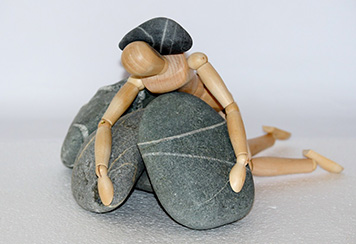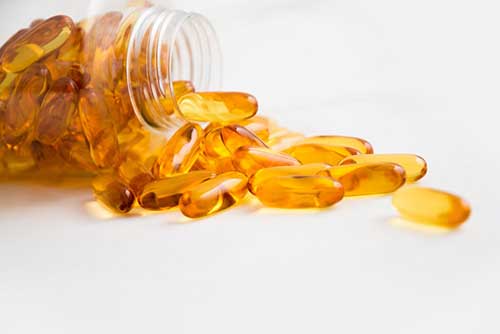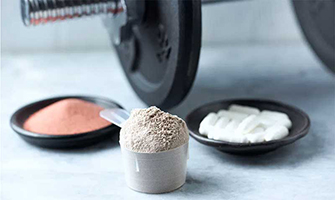Choosing effective supplements
Over the years I have made my position on supplements very clear: Use them as they were intended to fill gaps in your otherwise healthful, balanced nutrition strategy. Not only should you not rely upon them as a main source of energy or vitamins, minerals, and fiber, you should not rely on them to provide what the manufacturer claims. There are very few proven effective supplements. In other words, you should generally save your money (e.g. fish oil does not actually improve your brain or heart health; over-supplementing on antioxidants causes, not prevents, disease; and many weight loss pills are simply several different sources of caffeine mixed together in one capsule).
There are two exceptions. Creatine and Beta Alanine are perhaps the two exercise specific supplements that have been the most thoroughly researched, and which have yielded consistent results across many studies. They are inexpensive, commonly available, and helpful for busting plateaus (but by no means required for the general fitness enthusiast).
First and foremost, you do not need to bother with either of these if you are looking to improve or maintain general fitness. If you aren’t exercising with enough frequency or intensity to force muscle growth or endurance, then you should not bother with these two powders either.
What does Creatine do?
Creatine is a hydrophilic molecule that your body already produces on its own. Supplementing with it is meant to augment and enhance its natural effects. Being hydrophilic, creatine draws water toward itself. It is found around muscle fibers, and it makes water available to muscles, so that they can use energy. In a process that is mind bogglingly complex, water facilitates the production and availability of power. By using effective supplements like creatine, more water is stored between muscles fibers, which allows more energy to be produced and used, and thus gives muscles a bit more strength. Being able to move more resistance is of fundamental importance to triggering protein synthesis, which is itself what causes muscles to grow.
Contrary to what many fear, creatine does not cause subdermal bloating. The water that is retained is kept between muscle cells, not under the skin. Rather than making someone look puffy, it makes them look tight and full. There is no need to take vast amounts of creatine to build it up in your system. It accumulates over the course of time, so taking 5g per day should get you gently toward your optimum level with a week or so. It doesn’t matter when you take it, because it will build up and remain in your system. If you stop taking it, it will gradually deplete itself, and the retained water will be eliminated. I also suggest against mega-dosing for a practical reason: Flooding your gut with large amounts of creatine will draw water into your bowel, and can cause explosive diarrhea. Be sure to drink lots of water, because some of it will be trapped around your muscles, and therefore unavailable to the rest of the body.
What does Beta Alanine do?
Beta Alanine is the perfect companion to creatine. Creatine increases strength by making water available, and beta alanine improves endurance by helping to manage the pH balance within muscle cells. Using the two together you can increase your total volume of strength training: You can create more effort for longer durations.
Our body uses chemical energy produced during the process of snapping a single phosphate on and off a molecule you might remember from high school biology. Adenosine triphosphate (ATP) has three phosphates, and adenosine diphosphate (ADP) has only two. The process of converting back and forth between the two is what generates the energy that powers all sorts of activities within the body. It requires water (hence creatine). The process also lowers the pH within muscles as it also releases hydrogen ions, and this increasing acidity is what eventually halts a muscle from firing.
This increasing acidity is the “burn” you should feel as you approach the end of an appropriately challenging set. It is lactic acid, and it eventually prevents any further breakdown of glucose into energy, and thus shuts down muscle recruitment. Lactic acid is an important fuel source and it eventually prevents a muscle from contracting, but it is NOT the source of pain you feel in the days after an intense workout. That pain is the result of microscopic tears and inflammation, both of which are vital to forcing a muscle to repair itself and build more mass and strength.
But acidity is one of the underlying factors that eventually exhausts a muscle and prevents further performance. This is where beta alanine is one of the effective supplements that helps with endurance. Supplementing it provides more of it to bond with histidine (another naturally occurring amino, generally kept at higher levels than beta alanine within muscles) to create carnosine. Carnosine bonds with hydrogen ions, delaying muscle fatigue by slowing the buildup of this acidic molecule, and allows a working muscle to continue firing for longer by allowing it to continue to break down glucose to ATP.
How do you take them?
Beta alanine also builds up in your system, so like creatine, it can be taken whenever it is convenient. The tingling you might feel is normal, and isn’t dangerous. It generally starts around 15-30 minutes after you ingest it, and passes within another 15-30 minutes.
These two effective supplements are well researched, and when taken properly they are safe. They aren’t crucial, but they can be helpful when you’re trying to work through particularly challenging strength or conditioning sessions. They help you lift, cycle, and run with greater power for prolonged times, and thus effectively increase your performance. This ability to work harder and longer can help you to make faster strides toward your goals.
Recent Posts

Glycemic Index vs Glycemic Load
This score indicates how damaging a food will be to your blood sugar levels. Foods that score 0-55 are rated low impact (and thus presumed to be better for diabetics and those looking to maintain healthy weight and/or body fat ratios), but this is not the whole picture.

Caffeine: 14 better options to ease SAD
Nearly a year ago to the dot, I wrote an article about Seasonal Affective Disorder (SAD), but there I focused on the importance of getting access to a full range spectrum of light. Here I’d like to focus on caffeine and sleep’s effect on SAD. I’ll also offer suggestions for what to do to help you feel better on the dark days.

Avoid fish oil supplements
I don’t generally promote supplements. Most of them play to specific, isolated points of medical research to serve as a magic pill. One remarkable example of this is fish oil.

